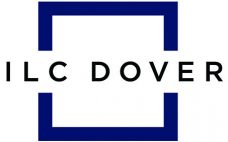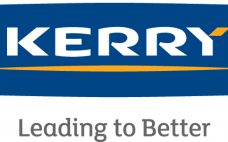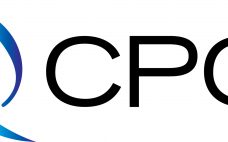Three-dimensional (3D) culture systems provide cell–cell and cell–extracellular interactions that reproduce the cellular microenvironment in vivo better than typical two-dimensional monolayers. This property is of paramount importance in many applications, including disease modeling, drug toxicity assessment, and manufacturing of stem-cell–based products (1). Cultivation in stirred-tank bioreactors using perfusion mode opens up new possibilities in the cultivation of 3D cell aggregates. Perfusion allows for removal of detrimental metabolites, cell debris, and proteases from the culture as well as the addition of…
Friday, August 24, 2018 Daily Archives
Updating Biologics Manufacturing: Using Modern, Single-Use Powder Handling Reduces Time to Market and the Chance of Contamination
Biopharmaceutical companies are striving to produce biologics more efficiently with a lower cost point and fewer employees. Most small-scale media and buffer operations are carried out with small bottles of liquid media. But as processes are scaled up to manufacturing levels, that is no longer a viable option. Costs of shipping liquid are simply prohibitive, so the industry has migrated to using media and buffer in powder form. In fact, 90% of cell-culture media and buffer for sale is now…
Biopharmaceutical Production in Fed-Batch CHO Cell Culture
Chinese hamster ovary (CHO) cells are used widely in the biopharmaceutical industry for the production of recombinant proteins. In times of rapid growth in the biopharmaceutical market with monoclonal antibodies (MAbs) and biosimilars, the use of chemically defined (CD) feeds and culture media for CHO mammalian cell culture is crucial. Currently, strict regulatory norms for the biopharmaceutical industry has led to the wide use of animal-component–free (ACF) culture processes, including CD media and feeds. A business requires significant amounts of…
Complex Protein Production with MaxCyte’s ExPERT Platform for Streamlined Cell Engineering
Complex proteins present a range of production challenges, including low expression levels, degradation, aggregation, a high degree of posttranslational modifications, and the need to use multiple or large expression plasmids. They also can lead to challenges in producing multi-subunit proteins with correct folding and subunit ratios. MaxCyte’s ExPERT platform for cell engineering alleviates those challenges by facilitating the production of complex proteins with high efficiency and cell viability in your cell line of choice. This technical note summarizes four applications…
Enhanced Ergonomics for Large-Volume Fluid Handling: Safe and Easy Operations with Flexsafe® Single-Use Bags
Built on over 30 years of expertise in large-volume fluid processing with 3D single-use bags, Sartorius Stedim Biotech collaborated with many end users for the large-volume Flexsafe® 3D system with enhanced ergonomics, thereby bringing operator safety to the center of successful drug processing. We conducted in-depth interviews to gather and explore operator insights into the usability of large-volume single-use systems. That input helped us improve our product offering with the aim of also improving workplace health and well being. A…
Hydrogen Bond Chromatography – A New Tool for Enhanced Separation of Proteins from Virus Particles and Other Very Large Biologics
CIMmultus ADC monoliths from BIA Separations are the first chromatography products in the field to exploit hydrogen bonding as the primary binding mechanism. These products bring a unique new selectivity to all purification challenges, but they are especially distinctive in their ability to retain large biomolecules more strongly than small ones. They enhance removal of fragments, aggregates, and viruses from proteins, and they enhance removal of proteins and other small contaminants from viruses and other very large biologics. H-Bond ADC…
DENARASE® Upgrading the Endonuclease from Serratia marcescens
Appropriate handling and removal of nucleic acids is crucial for many applications in red biotechnology and molecular biology. Upon the production of many biopharmaceuticals in fermentative processes (e.g., proteins, antibodies, and vaccines), nucleic acids are concomitantly generated and accumulated in culture broth, particularly when microbial cells are disrupted during work-up. Such accumulation increases the viscosity of the liquid fraction significantly and complicates downstream processing and purification. To be marketable and comply with strict safety regulations, biopharmaceutical products need to be…
New Genderless AseptiQuik Connector for Higher Flow in Bioprocessing
Failure is not an option. When a single drop of fluid can make a huge difference in your single-use system, you need smart, reliable, and easy-to-use fluid handling solutions that get the job done right and safely. That is why biopharmaceutical manufacturers from all over the world rely on CPC’s AseptiQuik® connectors. They provide quick and easy sterile connections, even in nonsterile environments. They feature an easy-to-use three-step assembly and come in a wide range of size options and genderless…
Development of Novel Cellulose Based rProtein A Capture Resins for Improved Workflow Effective Mab Purification
A new product development approach will be described here for the affinity capture of monoclonal antibodies (MAbs) from cell culture materials using a novel base stable rProtein A ligand with up to six available Fc binding sites. The resin is based on a stable cellulose bead structure with excellent flow properties combined with the affinity ligand immobilized at multiple sites to yield a robust next generation MAb capture resin with a high level of binding capacity. These resins have been…
Continuous Batch Chromatography and More: Multifunctional, Twin-Column Continuous Chromatography in a Simple, Robust Design
The LEWA EcoPrime® Twin LPLC multicolumn chromatography system is easy to use and GMP ready. It offers seamless scale-up for continuous batch chromatography from process development to large-scale biopharmaceutical production. The EcoPrime Twin platform spans a wide range of flow and column sizes and has several options to incorporate multiple functionality on a single unit. The EcoPrime Twin system is built on ChromaCon’s Contichrom patented approach to twin-column purification. Because of the two-column configuration, the EcoPrime Twin is a simple…










